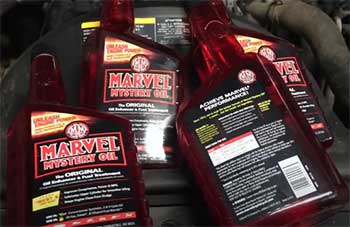Choosing tires can feel like a gamble, but it’s one you can’t afford to lose.
I’ve driven on both Michelin and Mastercraft tires, and in this article, I’ll break down their performance, durability, and value to help you decide which fits your ride.
Whether you’re after premium quality or budget-friendly reliability, understanding their strengths and weaknesses is key.
From my real-world experience to detailed comparisons, I’ll guide you through the pros, cons, and unique features of these brands.
Let’s roll into finding the perfect tires for you.
Comparison Table: Michelin Vs. Mastercraft Tires
| Feature | Michelin Tires | Mastercraft Tires |
| Price | Premium, higher cost | Budget-friendly, lower cost |
| Durability | Exceptional, up to 80,000 miles | Good, around 40,000–50,000 miles |
| Traction | Superior wet and dry grip | Reliable wet and dry grip |
| Noise Level | Quiet, comfortable ride | Average, some models noisier |
| Warranty | Up to 80,000 miles, 30-day guarantee | Up to 50,000 miles, 45-day road test |
| Performance | Excellent handling, precision | Good handling, less responsive |
| Best For | Luxury cars, long-distance, all-season | Daily commuters, budget-conscious drivers |
My Journey with Michelin and Mastercraft Tires
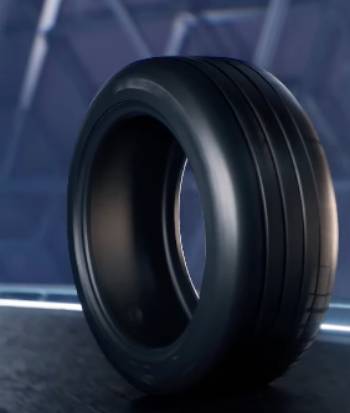
I’ve been driving for over a decade, and tires are a big deal for me.
Living where winters are wet and summers are scorching, I need tires that handle slick roads and long highway stretches.
A few years ago, I splurged on Michelin Primacy MXM4 tires for my sedan, hoping their premium reputation would deliver.
They did. The grip on wet roads was unreal, and the ride was so quiet I could hear my playlist over the highway hum.
Cornering felt precise, like the tires were part of the car. After 50,000 miles, the tread still held strong, which amazed me.
Michelin’s price tag hurt, though, so for my SUV, I chose Mastercraft Stratus A/S, a budget option from Cooper Tires.
Could a cheaper tire keep up? Surprisingly, yes. They gripped well in rain and were quiet on smooth roads.
I hit potholes (thanks, city streets), and they held up fine. But on rough terrain, I noticed more noise and less responsiveness than the Michelins.
After 30,000 miles, the tread started wearing, but for the price, I was impressed. Michelin offers premium performance; Mastercraft delivers solid value.
The Pros of Michelin Tires
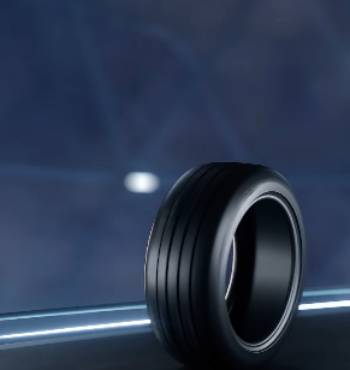
- Unmatched Durability: Michelin’s Defender T+H boasts treadwear warranties up to 80,000 miles. My Primacy MXM4s lasted years of mixed driving with reliable grip.
- Superior Traction: With EverGrip technology, Michelin tires excel in wet and dry conditions. I never worried about hydroplaning in heavy rain due to excellent water evacuation.
- Quiet and Comfortable: Engineered for serenity, Michelin tires made my highway drives whisper-quiet. Long trips were enjoyable, even with kids chatting in the back.
- Precision Handling: Models like the Pilot Sport 4S offer responsive steering. I felt in control on winding roads, with no lag or slip at higher speeds.
- Trusted Brand: Michelin’s 100+ years of innovation and partnerships with Porsche and Ferrari inspire confidence. Their tires often come standard on luxury cars.
The Cons of Michelin Tires
- High Cost: Michelin’s quality comes at a premium. My wallet felt the sting buying a set, making them less ideal for budget-conscious drivers.
- Overkill for Casual Driving: For short commutes, Michelin’s advanced features might be excessive. I sometimes wondered if a cheaper brand would’ve sufficed.
- Limited Niche Sizes: Some Michelin models aren’t available for uncommon tire sizes, which can be a hassle for older or specialty vehicles.
The Pros of Mastercraft Tires
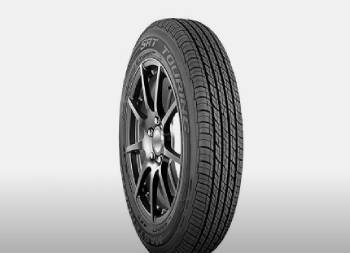
- Affordable Price: Mastercraft’s Stratus A/S costs nearly half of Michelin’s. I paid less for my SUV’s tires, making them a budget win.
- Solid Traction: The Courser AXT grips well in wet and light snow. My rainy city drives felt safe and stable.
- Good Durability for Price: With 50,000-mile warranties, Mastercraft lasts well for the cost. My Stratus A/S held up for over 30,000 miles.
- Versatile Options: Mastercraft offers tires for cars, SUVs, and trucks, with all-season and all-terrain models. I found a perfect fit for my SUV.
- Quiet on Smooth Roads: The Stratus A/S was comfortable and low-noise on highways, a pleasant surprise for a budget brand.
The Cons of Mastercraft Tires
- Average Performance: Mastercraft isn’t as responsive as Michelin. Cornering felt less precise, especially on twisty backroads.
- Noisier on Rough Roads: Unlike Michelin, Mastercraft tires got louder over potholes, noticeable during city drives.
- Shorter Tread Life: With 40,000–50,000-mile warranties, Mastercraft wears faster than Michelin’s 80,000-mile potential. My tires showed wear sooner.
Why Michelin and Mastercraft Matter
Tires are your car’s handshake with the road, and Michelin and Mastercraft offer distinct grips.
I’ve driven on both, and each suits different needs. Michelin’s premium tires, like the Primacy MXM4, are built for longevity and safety, ideal for luxury cars or long-distance drivers.
Mastercraft, a Cooper Tires brand, delivers reliable performance at a lower cost, perfect for daily commuters watching their budget.
Their features—durability, traction, noise, and handling—shape your driving experience, so choosing wisely is crucial.
Michelin’s innovation shines through technologies like EverGrip, which maintains wet grip as tires wear.
My Primacy MXM4s stayed reliable in rain even after heavy use, thanks to hidden grooves that emerge over time.
Michelin’s partnerships with Audi and Mercedes-Benz mean their tires are engineered for precision, often as original equipment on high-end cars.
Their 80,000-mile warranties reflect durability, but prices ($150–$300 per tire) can sting.
Mastercraft, made by Cooper Tires, focuses on value. Their Stratus A/S and Courser AXT use Shoulder Sipe technology for wet grip and stability.
I found the Stratus A/S solid for commutes, with 50,000-mile warranties at $80–$150 per tire.
Made in U.S. facilities like Texarkana, Arkansas, Mastercraft shares Cooper’s quality but lacks Michelin’s refinement in high-performance scenarios.
Your driving habits dictate your choice. Michelin suits long highway drives or luxury sedans, offering a smooth, quiet ride.
Mastercraft is great for short commutes or budget constraints. My SUV’s Mastercraft tires handled city roads well, but I missed Michelin’s smoothness on rough patches.
Both offer all-season and all-terrain options, but Michelin covers niche vehicles like sports cars, while Mastercraft sticks to cars, SUVs, and trucks.
Also Read: Comparison of Atturo AZ850 Tire
Key Features That Set Them Apart
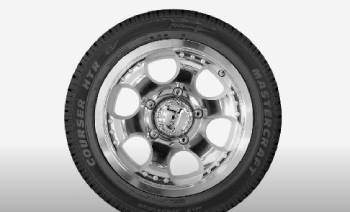
Michelin and Mastercraft each bring unique technologies to the table, and understanding these can tip the scales for your decision.
Michelin’s strength lies in its advanced tread designs and proprietary compounds.
Their EverGrip technology, found in tires like the Defender LTX, uses expanding rain grooves and emerging sipes to maintain traction as the tire wears.
I noticed this on my Primacy MXM4s—wet grip stayed strong even after 40,000 miles, a testament to Michelin’s focus on longevity.
Their X-Ice Snow tires use Flex-Ice compounds for superior winter traction, which I haven’t tested but hear is a game-changer in snowy regions.
Michelin’s MaxTouch Construction distributes forces evenly, reducing wear and extending tread life, which explains why my tires lasted so long.
These features, paired with Michelin’s rigorous testing (over 1.8 billion miles annually), make their tires a premium choice for safety and performance.
Mastercraft, as a Cooper Tires brand, leverages simpler but effective technologies.
Their Shoulder Sipe technology, used in the Stratus A/S, adds biting edges for wet and light snow traction, which I found reliable during rainy commutes.
The Courser AXT’s aggressive tread pattern suits light off-roading, with stone ejectors to prevent damage—great for my SUV on gravel roads.
Mastercraft’s silica-enhanced compounds improve grip and fuel efficiency, though not as advanced as Michelin’s.
Their 3D sipes enhance stability, but I noticed less precision than Michelin’s on sharp turns.
Mastercraft’s focus is affordability, using Cooper’s U.S.-based manufacturing to deliver quality at a lower cost, but they don’t match Michelin’s high-tech edge or extensive range for specialty vehicles.
Michelin’s broader lineup includes tires for motorcycles and high-performance cars, like the Pilot Sport Cup 2, which I’ve seen praised by car enthusiasts for track use.
Mastercraft sticks to practical options, lacking ultra-high-performance models.
Michelin’s 30-day satisfaction guarantee adds peace of mind, while Mastercraft’s 45-day road test is slightly more generous but less comprehensive in warranty mileage.
If you value cutting-edge tech and long-term performance, Michelin leads; for reliable, cost-effective driving, Mastercraft holds its own.
Also Read: My Thoughts On Lionhart Lionclaw ATX2
Frequently Asked Questions (FAQs)
Yes, Mastercraft tires are reliable for budget-conscious drivers, offering solid traction and durability for daily driving, though they don’t match premium brands like Michelin.
Michelin is among the best for durability, traction, and comfort, but the “best” depends on your needs. It excels for premium performance.
Mastercraft tires are made by Cooper Tire & Rubber Company, a U.S.-based manufacturer with over 100 years of experience, also producing Avon and Roadmaster.
Mastercraft tires typically last 40,000–50,000 miles, depending on driving conditions and maintenance, with warranties often covering up to 50,000 miles.
Final Thoughts
Your tires are your car’s lifeline to the road, and Michelin and Mastercraft offer distinct paths.
Michelin’s premium quality—durable, quiet, precise—transformed my sedan’s ride, perfect for those seeking top performance.
Mastercraft’s affordability kept my SUV rolling smoothly without breaking the bank.
Weigh your budget, driving style, and needs to find your fit.
Try Michelin for luxury or Mastercraft for value—you’ll drive confidently either way.
